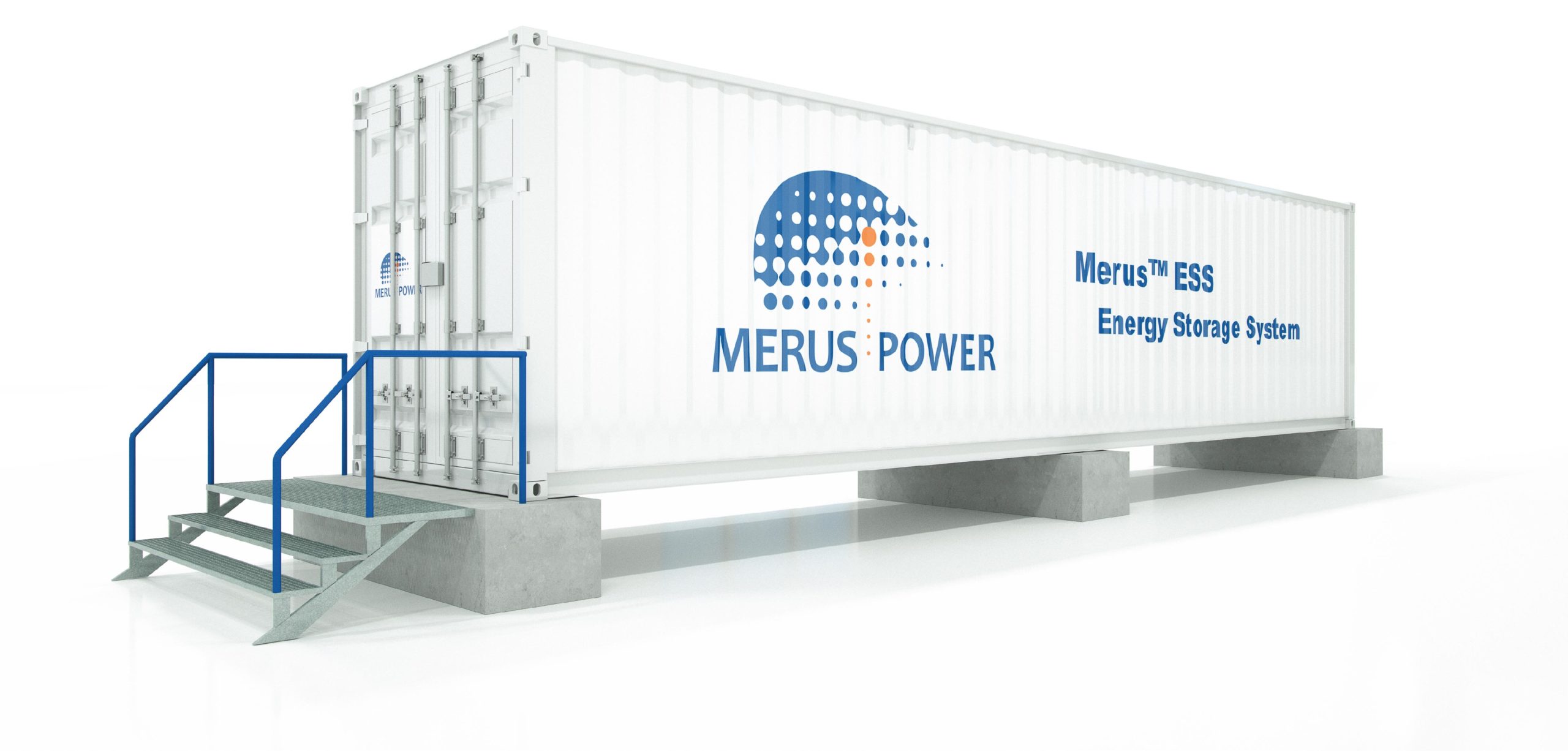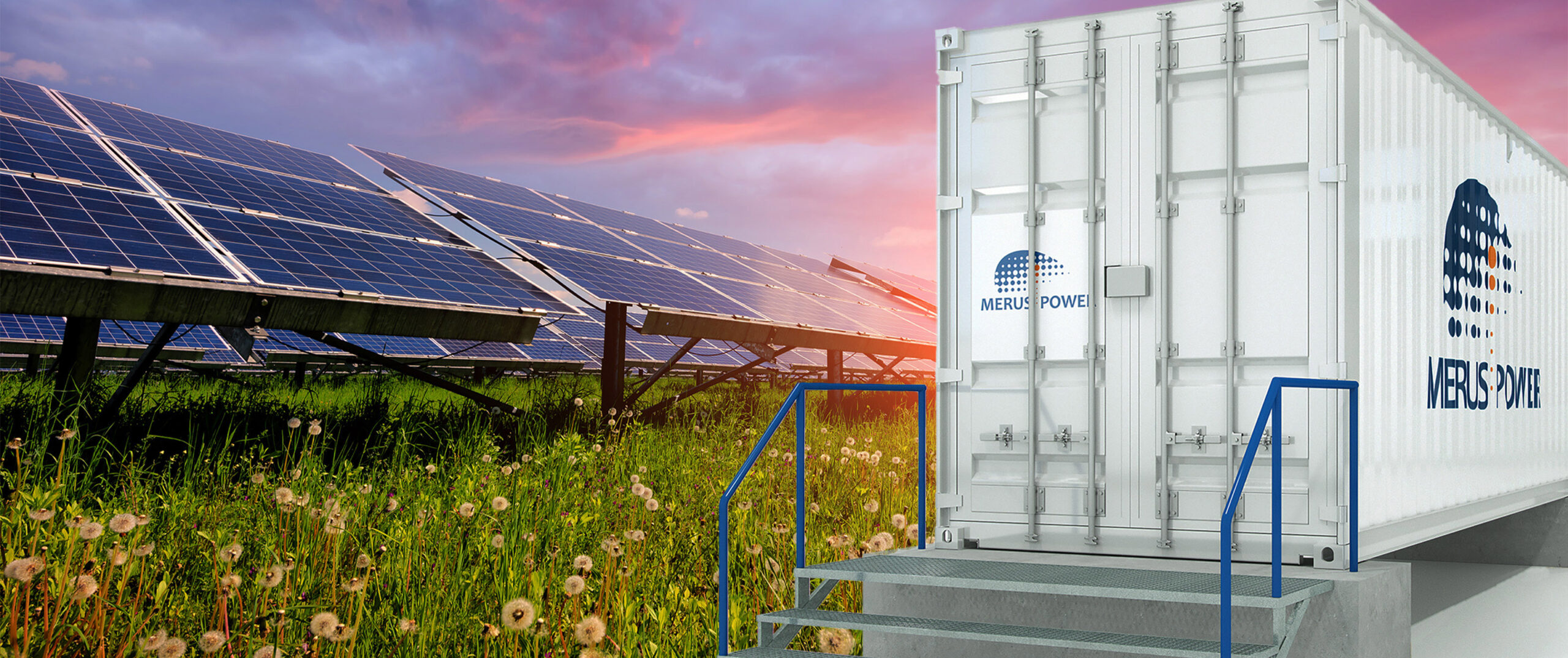
Solar + Merus™ ESS Energy Storage – powerful renewable energy solution for our planet
Solar power as a source of renewable energy has grown exponentially in the 21st century and will continue to grow also in the future. Solar energy is the fastest-growing form of renewable electricity generation in the world. The decrease in solar energy technology costs increases the availability of solar energy and accelerates investments. There are also interesting new innovations and thus potential to ever-steeper growth in the use of solar power. For example, perovskite technology makes the future of solar power rather interesting.
Every moment, the earth receives thousands of times more energy from the sun than all of our current energy consumption, and this makes solar power a superior source of energy. However, there is a logistical problem with solar energy. The sun does not shine at night or, for example, here in the Nordics the intensity of the sun is not enough in winter. In order to make efficient use of the enormous capacity of solar power, additional support is needed. There are different methods to store energy and battery-based technology is one of them. With sophisticated battery energy storage, such as our Merus™ ESS, you can do much more than just store energy. Examples include helping in meeting the required power quality norms and enable black start in a microgrid. A solar power plant and an advanced energy storage are the perfect combination that is suitable for many applications, like production facilities, microgrids and energy producers.
But how to choose the size of energy storage for solar power?
In this blog, we present you the advantages of energy storage in solar power production more precisely, and a generalized method to estimate suitable electrical storage for solar power production. Our Merus™ ESS energy storage solutions are scalable to get the perfect fit for customers’ needs. Our customers can rely on our technical specialists’ help to find the best solution and size for their needs.
How to find the perfect combination of energy storage and solar power
General solar power generation model and the size of energy storage
Photovoltaic power plant generation can be estimated to follow a half-sine waveform with 12 hours of sun and 12 hours of darkness at the Equator.
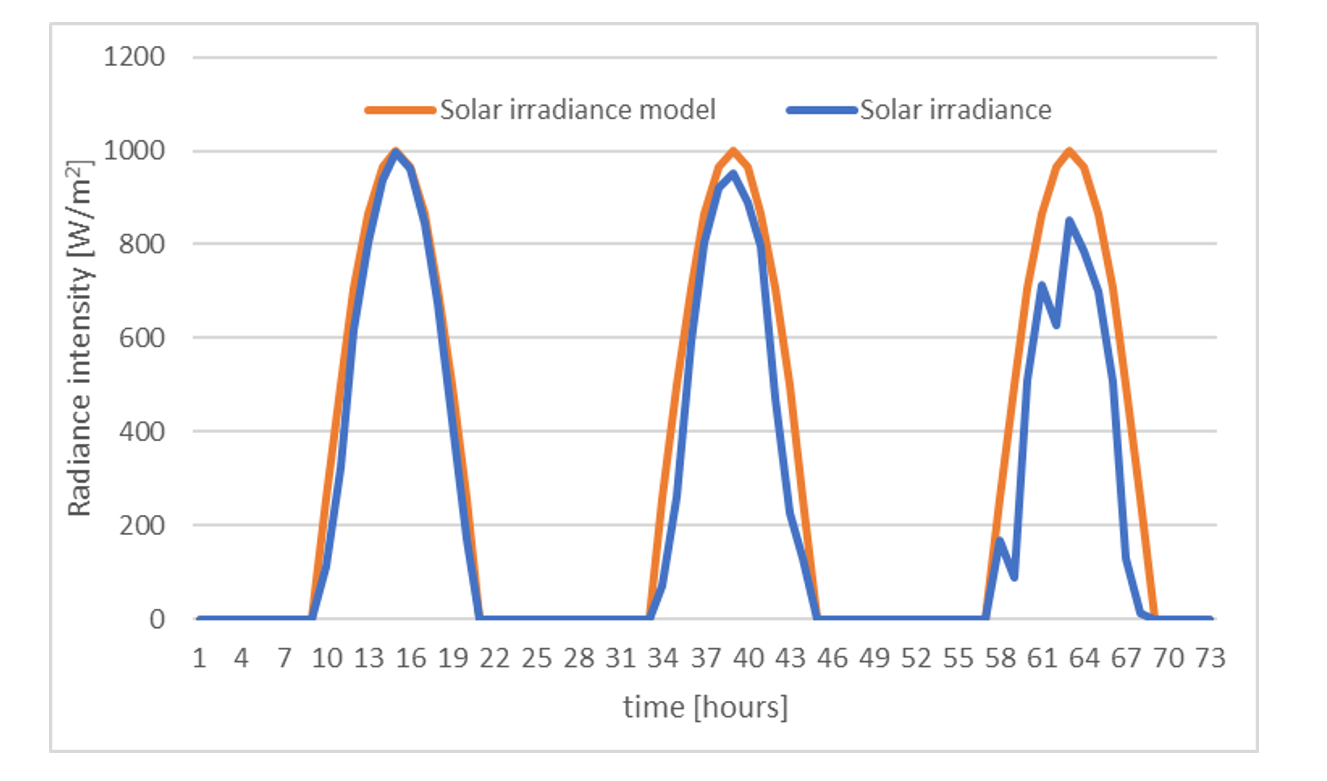
Some of the energy produced by the sun can be stored in an energy storage during the day, typically during peak production hours. The resulting production curve at the utility metering point can be thought of as peak shaving. The idea of peak shaving applications is that energy storage, such as Merus™ ESS, is used to level the electricity supply to the local microgrid or the utility network, without exceeding a given peak power limit.
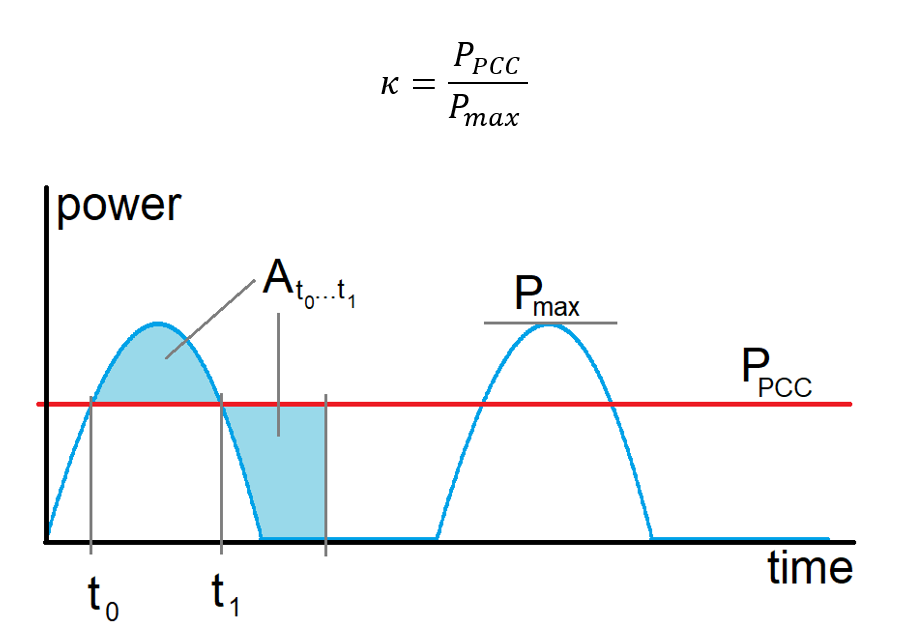
In our solar power model, we can assume that process repeats itself in 24h periods. To simplify, we analyze only the first 24h period. It is possible to calculate how much energy needs to be stored during a day. This way it’s possible to obtain the minimum Merus™ ESS energy capacity. Read our technical documentation if you are interested in how to do the calculations.
Profit of solar power production peak shaving
Why store solar energy in electrical energy storage? The technical reason is that at large, electricity consumption does not match the solar power generation curve. But this investment must also be financially sensible.
To be able to calculate the payback time of a Merus™ ESS performing peak shaving, we must define the business case for peak shaving. In this blog, we are giving two different business cases for peak shaving.
Business case 1:
The installed solar power capacity exceeds the connection point power limit.
- Installed maximum solar capacity ???? exceeds the connection point power limit ????. Therefore, solar power generation is limited to ???? without Merus™ ESS
- With ESS installed, full solar power generation capacity can be utilized
- Increased revenue is proportional to the energy tariff (USD/MWh)
- Considered investment is the purchase price of the Merus™ ESS
Business case 2:
The energy storage enables solar plant extension. Before installation of the ESS, the customer has installed a solar power plant with the maximum production capacity ????,??? equal to the connection point power limit ????.
- After the installation of the Merus™ ESS customer may extend the solar plant capacity to ????,???
- Increased revenue is proportional to the energy tariff (USD/MWh)
- Considered investment costs are the prices of the Merus™ ESS and the price of the solar extension
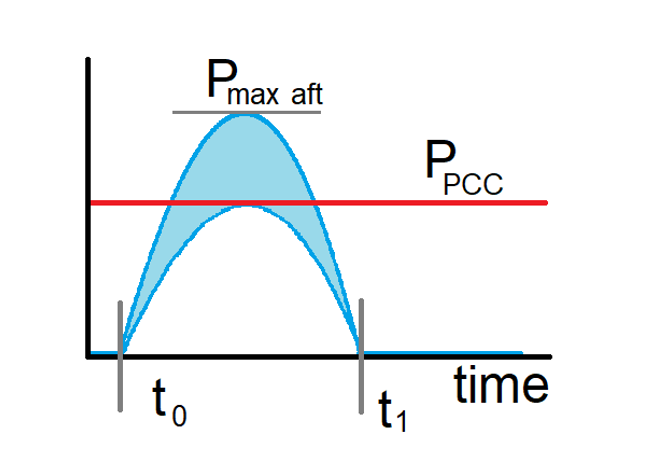
If you are interested in payback time estimation in 1-10MW energy storage solutions, please see the appendix of our technical pdf.
Solar power plant and Merus™ ESS Energy Storage combination
- Participation in the frequency response services for additional income
- Peak power limit
- Power ramp limit
- Full solar power generation capacity utilization by storing excess electrical energy
- Possibility to use excess energy during consumption peaks
- Additional income and reduced payback time
- Large market price variations create earning opportunities
Book a Merus™ ESS Energy Storage presentation for your company, where you get to know the many possibilities of our energy storage system. We focus on the use and application that interests your company the most. Our products are modular and easy to scale for very different needs.
